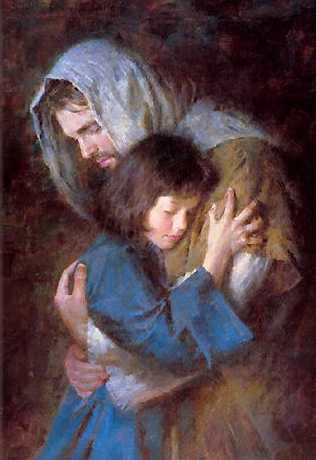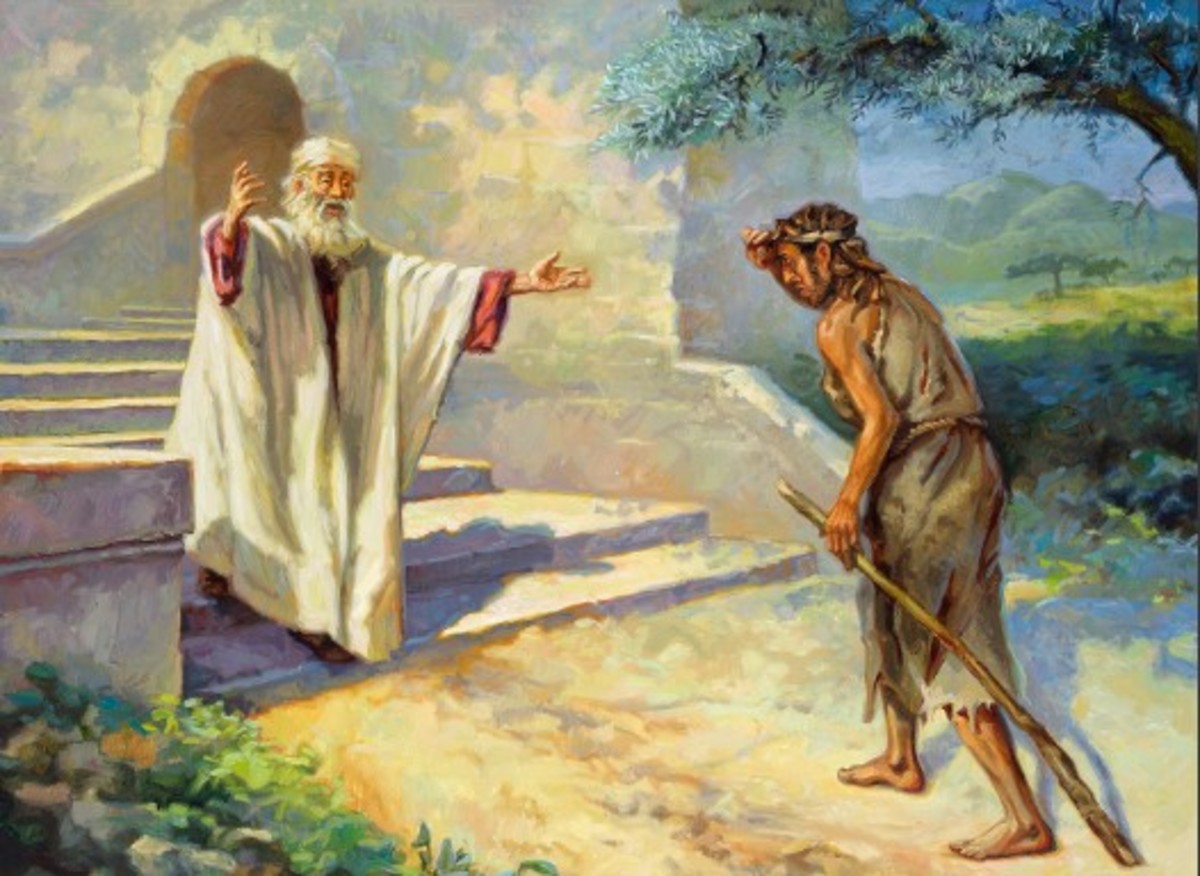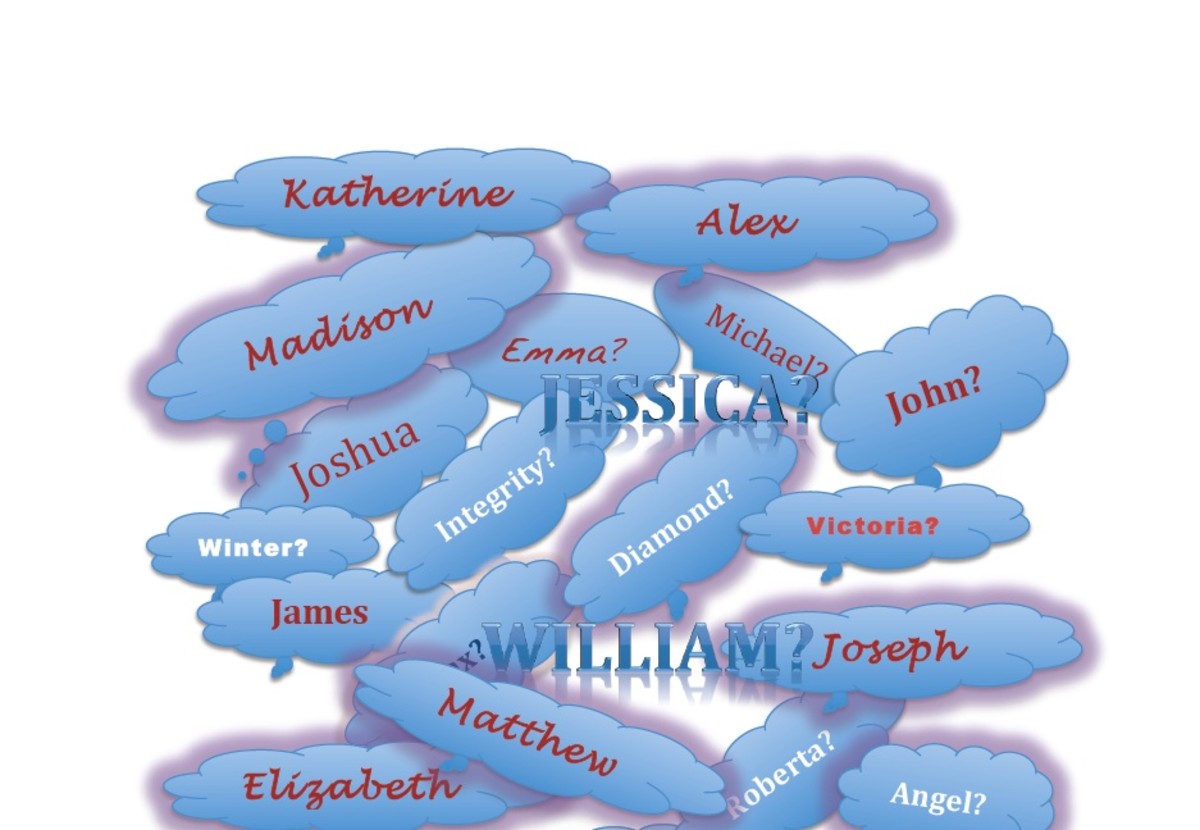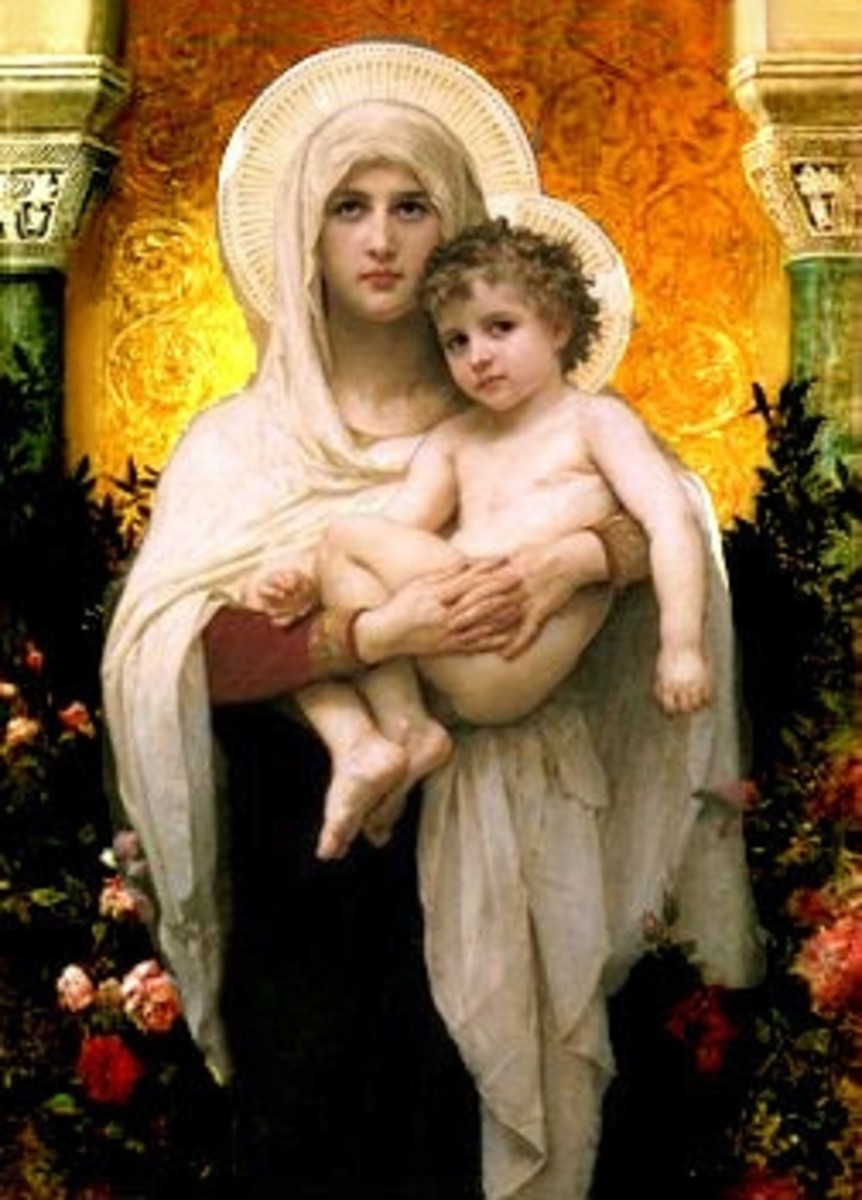The Merciful Love of the Father

The Merciful Love of the Father
Over at one CCD class, Dexter Rice, the catechist was telling his class the story of the Prodigal Son. Wishing to emphasize the resentful attitude of the elder brother, he laid stress on this part of the parable.
After describing the rejoicing of the household over the return of the wayward son, Dexter spoke of one who, in the midst of the festivities, failed to share in the jubilant spirit of the occasion. "Can anybody in the class," he asked, "tell me who this was?"
A nine year old girl who had been listening sympathetically to the story waved her hand in the air. "I know!" she said beamingly. "It was the fatted calf."
There are two things from the parable that I would like to emphasize in my reflection this Sunday:
1. The IMAGE OF THE “FATHER.” Most of us if not all could have lived in a very patriarchal family where the father is considered to be the “head of the family.” As head of the family, most of the decision flows from him and is therefore treated with utmost respect. His very words are like “dogma” to the family. Negatively, however, such authority at times could cause fear among members of the family and be rightly motivated to do or act on something out of fear. Jesus lived in a time that’s also very patriarchal. However, as he narrates the story of the prodigal son, he once again breaks away from the stereotype by illustrating a different image of the father. A father who’s not somebody to fear or to be afraid of, but a father who’s always there to welcome us not with a rod in order to punish us with our mistakes but to welcome us back in his loving mercy.
When the prodigal son came to his senses with the pigs and decided to return to his father, he did not expect his father to treat him again as his son. But, with total and unconditional love, he was welcomed back with open arms. No questions asked, the father immediately welcomed his son who was “lost.” Do we see the same image of the “father” in our respective homes? Or do we find our fathers totally absent whether physically or emotionally.
Fr. Charles Irvin, a priest of the Diocese of Lanseng whose blogsite I follow every now and then, said these words in his reflection this Sunday:
"There is an existing reality of “fatherless” homes. Consider now the terrible truth that the majority of men who populate our nation’s prison systems are men who have been fatherless. From the time they were little babies until they grew into their teen years they had no fathers, either physically or else emotionally. The terrible cost of being fatherless is found in many young men (not all, thank God) who have turned to gangs to find their self-worth. In joining a gang they have find a sense of identity, of who they are. It’s always a twisted image; it always results in hate-filled hearts and souls; it always causes them to become anti-social and commit terrible crimes of violence. Being fatherless, homeless, and alone in our hostile world exacts a dreadful toll on the individual souls involved and a terrible cost to our society as a whole."
Many years ago a study was done that resulted in these findings:
85% of all children that exhibit behavioral disorders come from fatherless homes (U.S. Center for Disease Control);
90% of all homeless and runaway children are from fatherless homes (U.S. Bureau of the Census);
80% of rapists motivated with displaced anger come from fatherless homes (Criminal Justice & Behavior, Vol 14, p. 403-26, 1978);
70% of juveniles in state-operated institutions come from fatherless homes (U.S. Dept. of Justice, Special Report, Sept 1988);
85% of all youths sitting in prisons grew up in a fatherless home (Texas Dept. of Corrections 1992).
Fatherless children are:
5 times more likely to commit suicide;
32 times more likely to run away;
20 times more likely to have behavioral disorders;
14 times more likely to commit rape;
9 times more likely to drop out of high school;
10 times more likely to abuse chemical substances;
9 times more likely to end up in a mental institution;
20 times more likely to end up in prison.
How do you see this picture? I believe that the parable gives us a concrete model of the “father” who actually sets balance to both “father” and “mother” qualities. A father whose stern with his decision but at the same time slow to anger and ready to listen.
2. THE SACRAMENT OF RECONCILIATION. There is a dwindling reality of people going to confession. People seem to have lost the “sense of sin.” People are callous about their sinfulness. They feel no guilt in whatever sins they commit whether grave or not. In other words, many of us no longer see the importance of going back to the father as the prodigal son did in the Gospel whose return was awaited earnestly. On his way back home his father was outside waiting for him. His father ran to him, clasped him in his arms and kissed him. It was a very powerful gesture that speaks of what God is like, always longing and waiting for our love. He doesn’t mind our sinfulness but finds more significance in our will to go back to him and ask for his forgiveness. The Father’s love in the parable was so immense that the prodigal son wasn’t able to say to his father that he would become a paid servant. Immediately, he gave the order to bring the robe, the ring, the sandals and kill the fatted calf for a celebration. With earnest anticipation, the Father showed to his son how abounding and generous he was in love and mercy.
The sacrament of reconciliation is a means of grace whereby we, in a way, reenact what happened in the parable of the Prodigal Son. We kneel before him. We rest our heads on his chest and allow our Father to embrace us. Come to the Father to receive his forgiveness. That moment when the Father embraces through this sacrament is when the priest recites the words of absolution over you and absolves your sins.
And so today, the 24th Sunday in Ordinary Time let us go back to the Father and see Him not as a person capable of punishing us of our sins but a person who welcomes us back in his loving arms through the Sacrament of Reconciliation. More importantly, let the parable reminds us of who we are as God’s beloved disciples, who in spite our sinfulness, opens his arms to welcome us back!








